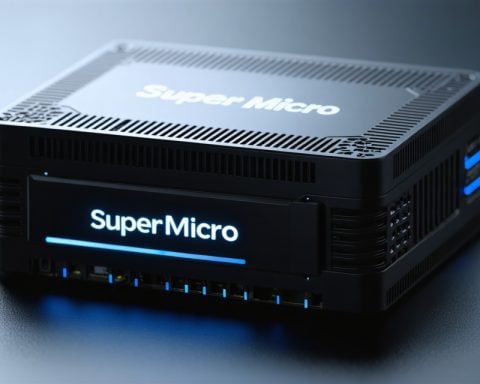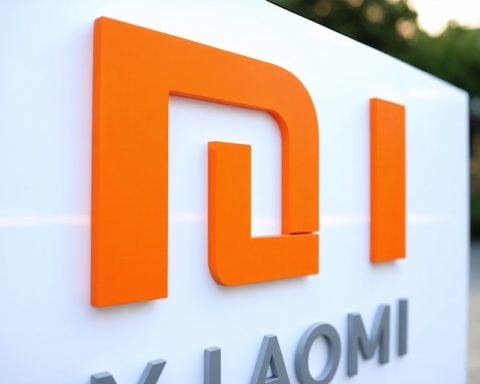As the smartphone market in Southeast Asia evolves, traditional giants like Samsung Electronics are facing increasing challenges from budget-friendly Chinese brands. The influx of affordable devices, often priced around $200, has reshaped consumer preferences in the region.
A 25-year-old gamer in the Philippines recently opted for an Infinix phone from Transsion Holdings, which he found to be a reliable choice for gaming. He was particularly pleased with the device’s performance but noted that the camera quality fell short of expectations, which he attributed to the brand’s focus on gaming graphics over photography.
Transsion’s rise in the Philippines has been notable, capturing a dominant market share of 31% in recent statistics, significantly outperforming Samsung, which holds only 15%. The appeal of brands like Tecno and Infinix lies in their balance of performance and affordability, attracting younger consumers keen on gaming.
In a broader context, the Southeast Asian smartphone market is rebounding after a downturn, with total sales in the last quarter reaching nearly 24 million devices. Chinese companies are at the forefront of this growth, with competitors like Oppo also introducing affordable models aimed at local markets.
In response to these trends, established companies like Samsung are shifting their strategies, emphasizing their flagship products’ artificial intelligence capabilities. Meanwhile, Apple is seeking to bolster its presence, having recently opened retail outlets in the region and planning future product launches to capture the growing demand for high-end smartphones.
Rising Competition in Southeast Asia’s Smartphone Market
The smartphone landscape in Southeast Asia is undergoing rapid transformation, driven by the ascension of budget-friendly brands and changing consumer behaviors. As competition heats up, several key questions emerge about the implications for established brands, consumer choices, and market dynamics.
What factors are driving the rise of budget-friendly smartphone brands?
The rise of smartphone brands like Transsion, Xiaomi, and Realme can be attributed to several factors. Affordability is the most significant, with these brands offering devices with decent specifications at lower price points, often below $300. Additionally, the increasing reliance on smartphones for daily activities, including online education and remote work, has led consumers to seek cost-effective solutions without compromising on essential features. Localized marketing strategies and a better understanding of regional consumer needs have also contributed to the success of these brands.
What are the key challenges faced by established companies like Samsung and Apple?
The primary challenge for established brands is the pressure to innovate and reduce prices without compromising their brand image. With affordable alternatives gaining traction among younger consumers, Samsung, for instance, must reassess its product offerings and pricing strategies. Another challenge is the changing consumer preferences; young users increasingly prioritize gaming capabilities, battery life, and design aesthetics over premium features that these companies traditionally emphasized.
Are there any controversies surrounding the growth of Chinese smartphone brands?
Yes, the rapid expansion of Chinese brands has sparked concerns related to data privacy and security. Several governments in the region have raised questions about potential data leaks and the safety of using devices from certain manufacturers. Additionally, there are ongoing debates about market fairness, as some critics argue that aggressive pricing strategies may undermine local smartphone manufacturers unable to compete with these low-cost importers.
What are the advantages and disadvantages of the increasing competition?
Advantages:
– Consumer Choice: Increased competition fosters a broader range of options for consumers, allowing them to find devices that suit their needs and budgets.
– Innovation: As brands compete for market share, they are incentivized to innovate in features and technology, potentially benefiting consumers with better products.
– Pricing: Greater competition often results in lower prices, making smartphones more accessible to a larger population.
Disadvantages:
– Quality Concerns: Some budget devices may compromise on build quality or software support, leading to a perception that affordability comes at the expense of reliability.
– Market Saturation: As many brands flood the market, it can become saturated, complicating consumer choices and potentially leading to brand fatigue.
– Environmental Impact: Increased production and consumption can raise concerns about e-waste and sustainability in the long term.
In conclusion, while the competitive landscape in Southeast Asia offers numerous opportunities for consumers, it presents significant challenges for established brands. The evolution of the market will depend on how well these brands adapt to changing consumer preferences and regulatory concerns. To learn more about the evolving smartphone market, visit Forbes and TechCrunch.























